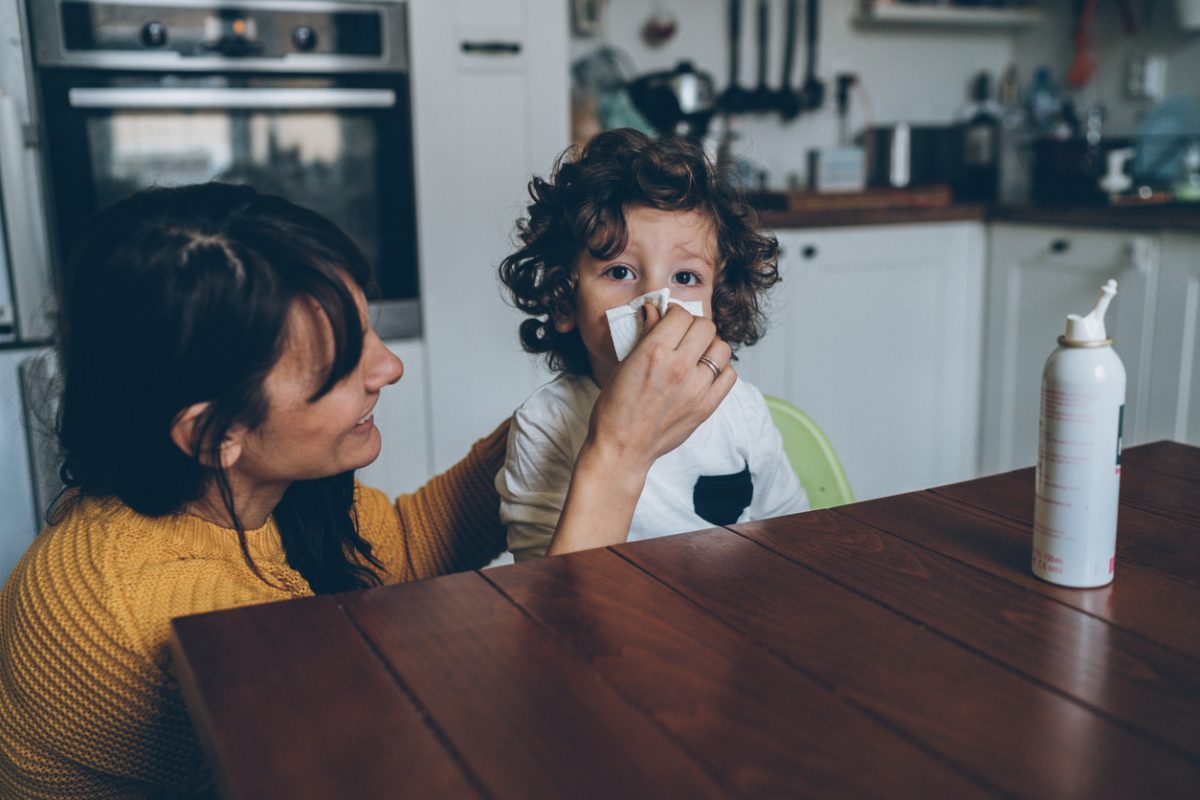
A sick day already? But they just started school! You probably have seen your child’s symptoms before: stuffy nose, watery eyes, maybe a cough. It could be a common cold or virus they picked up from one of their classmates. Or, it could be an allergy, rearing its ugly head during one of the busiest times of the year.
If your child is not suffering from allergies this fall, the chances are high that some of their classmates are. Allergic conditions are the most common health issues among children, according to the Asthma and Allergy Foundation of America.
It may be tempting to attribute your child’s symptoms to “fall allergies,” but the cause may not necessarily be seasonal.
An allergy? To what?
“Roughly 20 percent of people, maybe a little higher in children, are allergic,” said James Sublett, M.D., a spokesperson for the American College of Allergy, Asthma and Immunology and an allergist with Family Allergy & Asthma, Louisville, Ky.
Common triggers of respiratory symptoms include:
- Seasonal allergens (ragweed, tree pollen)
- Mold
- Animal dander
- Particulate matter
- Dust mites
“School environments can have all of these things,” Sublett says. “You transport animal allergens on your clothing. Anything outside can come inside.”
Particulate matter can come from a number of sources, including vehicle emissions, indoor heating systems and various outdoor pollutants. Some of the smallest, known as PM 2.5 (named for its size of 2.5 microns and smaller), are known to cause allergy-like symptoms. PM 2.5 has become a greater concern in recent years as indoor air quality has received more attention, to the point that it is tracked as part of air quality reports. The EPA also monitors and reports national and regional PM 2.5 trends.
“Those small particles are a real problem,” Sublett says. “They cause the same symptoms. They can cause cough, wheezing and trigger asthma.”
What you can do to reduce and avoid allergens
Avoiding contact with allergens is a major aspect of managing symptoms. Both Sublett and Joshua Davidson, M.D., an allergist at HealthCare Partners Medical Group in Redondo Beach, Calif., regularly recommend room air cleaners to patients as a way to reduce allergy symptoms.
“I recommend them as a way not only to reduce symptoms, but also their need for medications,” Davidson says. “If they reduce their symptoms by a third, they may need a third less medication. That’s a big plus for families trying to avoid medication, especially for kids.”
The allergists generally recommend air cleaners that use HEPA filters, which are designed to remove 99.97% of all airborne pollutants .3 microns and larger that pass through the filter, including tobacco smoke, household dust and pollen. “We recommend putting them primarily in the bedroom,” Sublett says. “That’s where a child spends most of their time. Get one that has an adequate CADR for the room.
CADR—Clean Air Delivery Rate—is the measurement produced by testing air cleaners that participate in the AHAM Verifide® Program. It shows the measurement of the air cleaner’s ability to filter three common indoor pollutants—pollen, tobacco smoke, and dust. The higher the number on the label, the faster the air cleaner removes the pollutants.
Before you buy, decide where the air cleaner will primarily be used. Measure the area of that room, and visit AHAM’s Directory of Certified Room Air Cleaners. This tool allows you to search for certified room air cleaners by room size or rating for tobacco smoke, dust and pollen. You might be tempted to buy one with more power than necessary, but that isn’t necessarily an advantage. You may end up with a model that uses too much energy or makes too much noise.
It’s important to use air cleaners consistently to reap maximum benefits. “I suggest running them continuously,” Davidson says. “Some families put them on at night. I often discuss, if they’re up for it, just turning them on and leaving them in the child’s bedroom.” Leaving the air cleaner on will prevent particles from settling while the air cleaner is off, Sublett said.
Sublett recommends positioning the air cleaner off of the floor so they’re running at least at the height of the bed. “We also recommend, as much as possible, having smooth surfaces in the bedroom.”
“Hay fever or allergic rhinitis can morph into asthma,” Davidson says. “You can see a progression of symptoms. With allergies, the impact can be pretty significant. I’ve seen significant days of missed work or school, and the secondary effects: job loss, not moving on in school, sleep disruption.”
Other steps
Regular vacuuming is also a key to removing allergens. A vacuum with a HEPA filter can remove more than 99 percent of allergens larger than .3 microns, including dust mites and pollen. And don’t limit your vacuuming to the floor. Upholstered furniture, mattresses and drapes can also harbor allergens and should be vacuumed as part of your regular cleaning routine. Washing clothes and bed linens in hot water will help kill and remove dust mites.
Use your ventilation hood when you cook, as cooking can sometimes generate particulate matter. Keep your windows closed and wash your hands regularly. Dehumidifiers and humidifiers can also be useful in the fight against seasonal allergies.
We hope this advice helps your student avoid those early year absences and keeps them on the path toward perfect attendance. Have a great school year!


